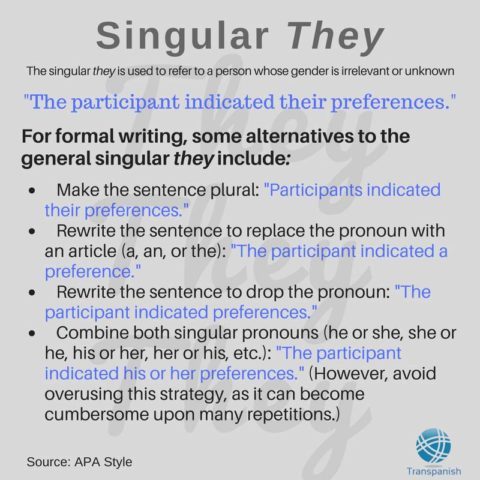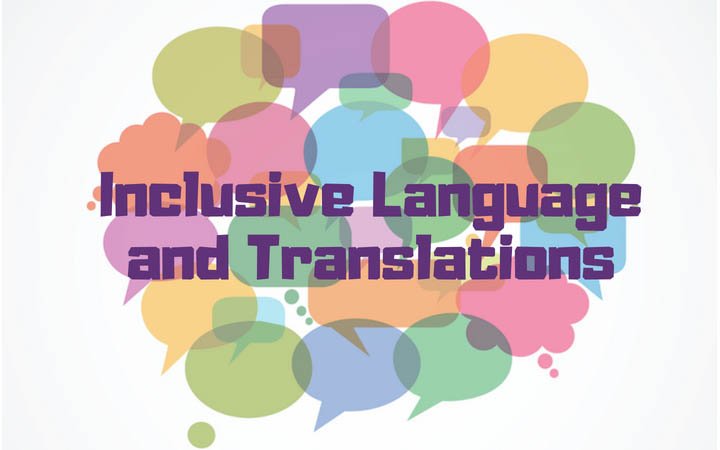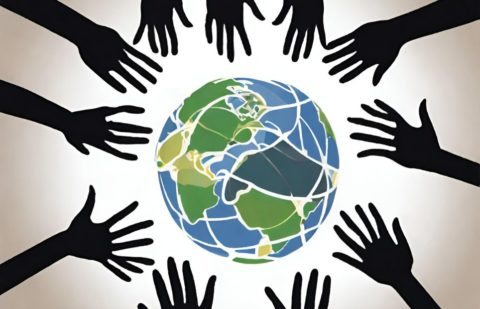While English doesn’t tend to gender its nouns, in contrast to many other languages like Spanish (which has its own approaches to inclusivity, see this article in Spanish), gender still subconsciously plays a key role in the language. From mankind to kingdom, countless words in the English language are charged with gender associations without speakers often meaning to make any sort of comment by doing so, a fact that translators should consider in their work.
The issue here is not related to the intended meanings of the words, but the often-discriminatory histories and ideas they reflect, risking leaving some feel left out of the human story. As the world becomes more inclusive and open-minded, its languages – metaphors for inclusivity, adaptability, and communication – evolve too, promoting gender-neutral language.
Why Use Gender-Neutral Language?
When gender-neutral language is discussed, transgender and non-binary issues follow soon after, which is perfectly understandable considering the growing awareness of these people and the struggles they face. However, gender-neutral language isn’t just a matter of including transgender and non-binary people, it’s about including everyone.
A great example of the potential usefulness of gender-neutral language is when you’re unsure of whether someone you’re translating material about is male, female, or non-binary, or perhaps from a culture with naming conventions you don’t understand. Using gender-neutral pronouns like they/them/their here is a major advantage of the English language that not only covers all possible bases but protects both you and the addressee from potentially awkward situations.
A Cultural Shift
It’s not just about pronouns. Gendered language and its role in the English language can be seen everywhere. Consider the words of Star Trek’s Captain Kirk “Where no man has gone before” in contrast to Jean-Luc Picard’s “Where no one has gone before” some decades later. The implication shifted from that this was man’s adventure, to everyone’s adventure. Language changed in Star Trek, reflecting changes in society – changes that are still happening today and that translators should bear in mind when trying to be inclusive.
How to Approach Gender-Neutral Language
Contrary to popular myth, the English language has had a gender-neutral alternative to he and she for centuries, making gender neutrality relatively easy. While there are pronouns that some non-binary and trans people may favor and that are polite to use if they make them known, the simple gender-neutral singular they/their/them pronouns have been used by everyone from Chaucer to Shakespeare and are absolutely not exclusively used for plurals. English has great built-in gender-neutral options that should be used if there is ambiguity or when gender is not important.
 English Makes It Easy
English Makes It Easy
While many languages insist on marking a difference between male and female doctors, lawyers and so on, English generally doesn’t and makes gender-neutral terms easy and natural to use. If there are gendered terms like businessman or policewoman, then this can be changed to businessperson or police officer. Other quick tips include “humanity” over “mankind”, “everyone” over “ladies and gentlemen” and “Good morning/afternoon” over “Dear Mr./Ms.”. The choice of vocabulary in the English language is vast and there’s almost always a natural gender-neutral option if you consult your thesaurus.
Inclusivity Is Key
This isn’t saying that gendered terms should never be used in translations. That would sound unnatural and they have to be used sometimes. The point is to encourage inclusivity through language as translators whenever the gender is an unimportant factor in a piece. There’s an argument to be made that language, along with history, has sided toward the role of males and overlooked females. But we are now at a point with greater inclusivity than ever before so it’s important to consider the role of language as it evolves to become more inclusive alongside us.








